Long Eaton - West Park
w/e 03 July 2016
All of this week's pictures were
taken with a Kodak DX6490

Part 01- Includes Trees 1 to 7
Back in 2009 (updated 2010) I added a four part series to the
site titled "The Trees of Victoria Park" in which I
noted some discrepancies between Erewash Borough Council's leaflet
and the actual site in Ilkeston. These were resolved when new
identification posts were installed and a little while later
I acquired another leaflet for another Tree Trail in the borough.
This one was for Long Eaton's West Park and although I am not
as familiar with West Park as I am with Victoria Park, I decided
that the time is now right to visit Long Eaton and follow that
Tree Trail too. Much of the information about the Tree Trail
has been gleaned from the Council's leaflet for which I am obliged.
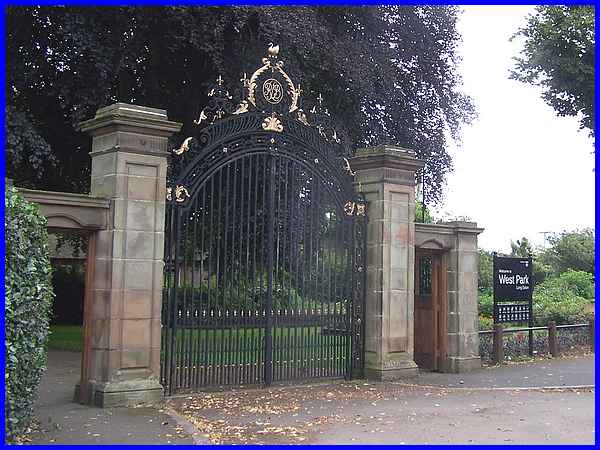
The route begins at the entrance gates to the park on Wilsthorpe
Road. These are the Robert Bakewell gates named after the man
who it is thought made them in the early eighteenth century.
Bakewell lived between 1682 and 1752 and the gates were made
for Alderman Thomas Rivett to be installed at his home in Derby.
In 1907 they were acquired by Reginald Sam Boden and moved to
Aston Lodge where they remained until 1932 when they were bought
for £33 at auction by Long Eaton Urban District Council
and installed here at West Park.
|
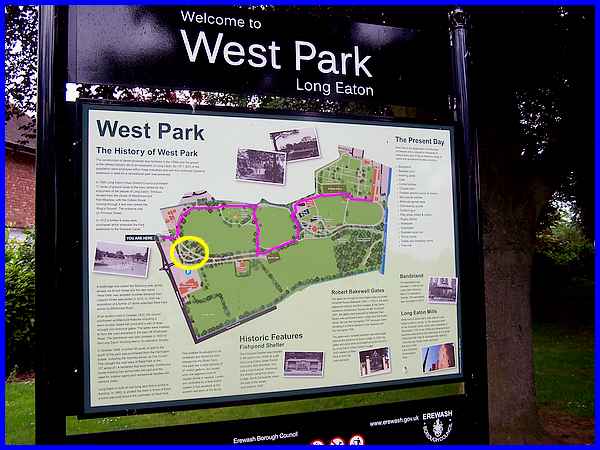
The above information about the Robert Bakewell gates is an abbreviated
version of a section on the board just inside the gates. I have
superimposed the Tree Trail route on the above image as a pink
line but we parked on the car park south of the gates and before
embarking on that route we first passed through the area circled
in yellow and there are a couple of images below of this area.
|

Leaving the car park we were immediately struck by the flower
beds as we entered the park.
|
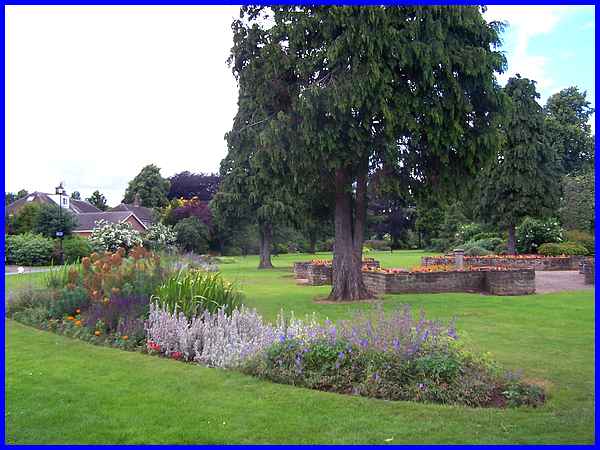
Turning left to follow the path round to the start of the Tree
Trail we passed more flowers and a formal area of raised beds.
|
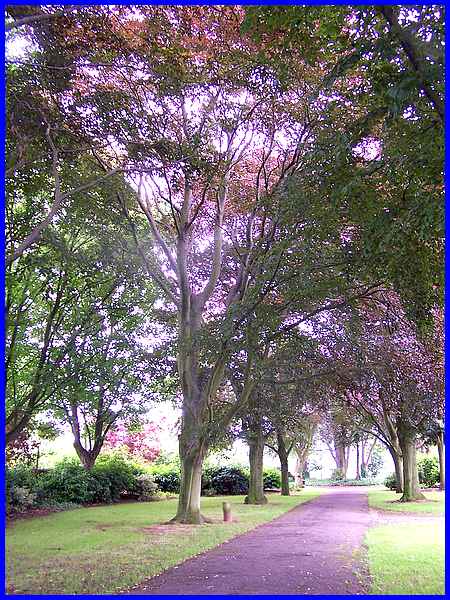
After exiting the park to photograph the Robert Bakewell gates
we returned to walk down this tree lined path having spotted
first the identification post on the left for a Copper Beech.
The council leaflet includes several interesting facts including
that one mature Beech produces enough oxygen for the needs of
ten people. In olden times it was believed that a wish written
on beech wood which was then buried would slowly come true as
the wood rotted. On a more practical level beech nuts provide
food for cattle and have also been used as fuel.
|
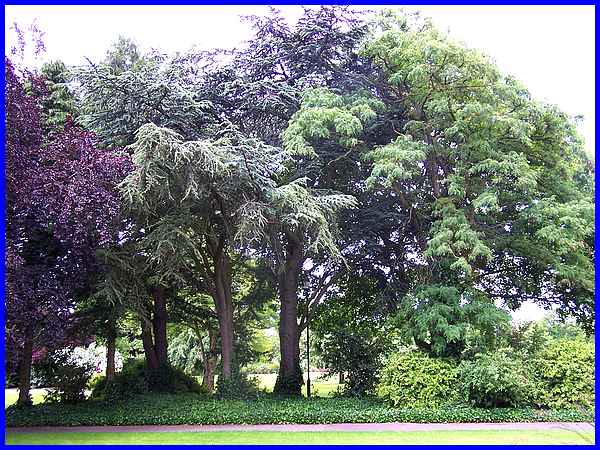
At the end of the path is a triangular piece of land on which
stand a variety of trees. Although we searched for an identification
post, we were unable to find one but the leaflet shows that an
Atlas Cedar is amongst these trees. Native to North Africa, its
usual habitat is in the Atlas Mountains and unlike other conifers,
Cedars flower in the autumn.
|
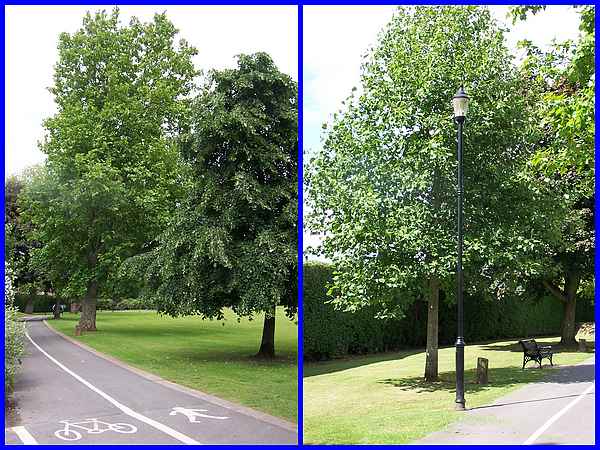
The next three trees line either side of the cycle/footpath to
the left of the triangular piece of land. The first (tree number
three and on the left above) is a London Plane while number four
(right above) is a Tulip Tree. Although not native to London
the London Plane was planted in Victorian times in great numbers
as it was tolerant to pollution, Tulip trees are so called because
they have tulip-like flowers in early summer. They were once
called "canoe wood" by Native Americans as a twenty
person canoe could be carved from one log.
|
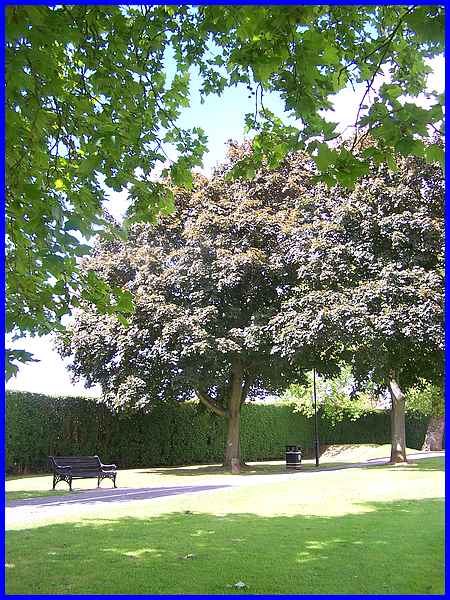
Close by and seen here from under the branches of the London
Plane is a Norway Maple, well suited to British conditions as
it tolerates not only pollution but also drought and frost.
|
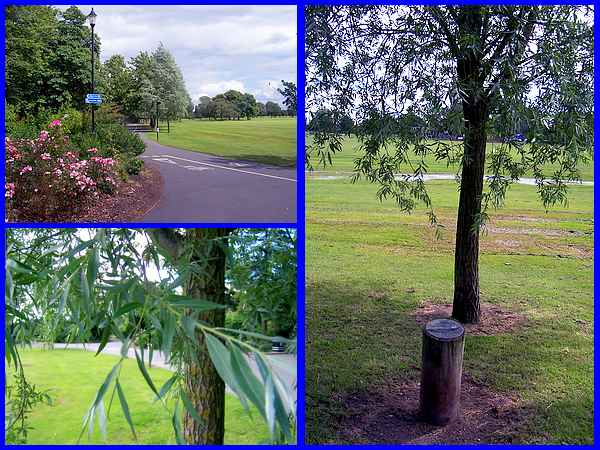
Moving on to tree number six and passing more flowering shrubs
(top left) we next saw a Crack Willow. The picture above right
shows the waterlogged ground following recent heavy rain and
flooding in West Park but this is no detriment to the Crack Willow
as twigs only need to be planted in damp ground in order for
them to take root. Growing to a height of twenty five metres
the trees get their name as the trunk grows so fast it often
splits under its own weight.
|

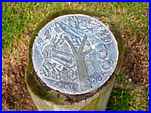 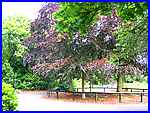 Tree number
seven and the final one in this part is a Red Oak, a fast growing
American species that prefers open locations. The wide open spaces
of West park are ideal for these trees. The leaves turn dark
red in autumn. We continued along the path to where a fenced
island (right) marks its junction with another path and it's
from here that we will continue in the second part of this series. Tree number
seven and the final one in this part is a Red Oak, a fast growing
American species that prefers open locations. The wide open spaces
of West park are ideal for these trees. The leaves turn dark
red in autumn. We continued along the path to where a fenced
island (right) marks its junction with another path and it's
from here that we will continue in the second part of this series.
|

